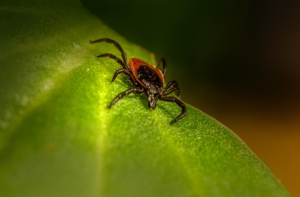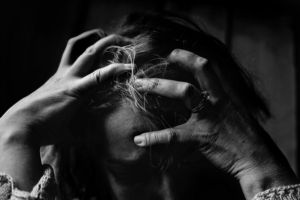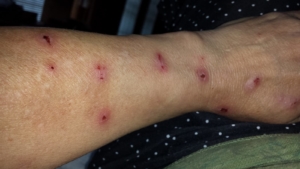Is Morgellons Disease Real or Imagined? Discover the Truth
The internet is rife with opinions and theories about Morgellons disease and its causes. Most related Google searches pull up articles claiming that Morgellons Disease is a mental disorder. Pundits on open forums make outlandish claims for dangerous treatments. While many sources are quick to cite fallacies and assumptions, let’s look at the facts.
The Charles E. Holman Morgellons Disease Foundation funds research to increase our scientific understanding of Morgellons’ underlying cause, diagnosis, and treatment. Our foundation is a grassroots effort to spread factual awareness and promote and fund further research.
This article will demystify Morgellons Disease by gathering and breaking down supportive findings.
Is Morgellons Disease Real or Imaginary?
Morgellons disease doesn’t exist in medical books. The CDC doesn’t even recognize Morgellons disease as an actual illness, instead referring to it as an “unexplained dermatopathy” and dismissing most telltale fibers underneath the skin as cotton fibers.
Contrary to popular medical sites and even the CDC, the Charles E. Holman Morgellons Disease Foundation has found scientific evidence that supports the existence of Morgellons disease:
- Reproducible findings of bacterial infection
- Evidence of tick-born transmission
- Proof embedded filaments are biological—not synthetic or from textiles
- Case studies in favor of antibiotic treatment
While symptom intensity varies from patient to patient, our research supports claims that common symptoms can be explained through replicable testing and observation.
General Symptoms of Morgellons Disease
Morgellons patients suffer from a wide-ranging and often debilitating variety of symptoms, making a diagnosis challenging to pin down. However, patients typically suffer from:
- Slow-healing skin lesions
- Inexplicable fibers in the skin
- Overwhelming fatigue
- Gastrointestinal issues
- Heavy brain fog
- Itching, stinging skin
- Muscle aches and joint pain
- Dental deterioration
- Sleep disorders
- Other psychiatric manifestations
Understanding dermatological symptoms
Ulcerating skin lesions (open sores) are often one of the most outwardly visible symptoms a Morgellons patient experiences. Open sores may cover a patient’s face, shoulders, trunk, arms, or legs. The sores are painful, slow to heal, and usually have multicolored fibers or filaments embedded in or protruding from the skin. These are typically only visible using magnification.
Morgellons patients are frequently misdiagnosed as having delusions of parasitosis or infestation, meaning they have imagined a parasite living under their skin. And their sores are often described as self-inflicted—an assumption the patient must be clawing at their flesh to remove imaginary creatures crawling inside.
If you or someone you love suffers from Morgellons, you know this form of self-harm couldn’t be farther from the truth.
Recent studies show that Morgellons patients aren’t delusional about their infestation. Something really lives deep inside their tissues, and doctors misdiagnosing Morgellons as a mental disorder can be extremely harmful.
Spirochetes: The Underlying Cause of Morgellons Disease
In several studies, Borrelia burgdorferi spirochetes, a species of bacteria, have been found living in samples taken from skin, cerebrospinal fluid, and vaginal excretions of Morgellons patients.

Morgellons Disease Fibers Magnified Specimen
Open skin sores are a manifestation of the body’s battle against a spirochetal infection—not endless scratching.
That constant tingly, creepy-crawling feeling Morgellons patients experience isn’t from the bacteria itself but instead a reaction to the infection.
Deep within the skin’s layers, some cells make the keratin and collagen fibers that help give skin support and structure. With Morgellons patients, these cells kick into overdrive, making massive protein strands or fibers. Morgellons patients can feel these fibers growing in their skin.
That sensation alone would drive anyone a little crazy—and it does lead many in the medical community to label Morgellons patients as delusional.
Spread of Infection
Supporting research suggests that a bacterial infection spread by ticks may cause Morgellons disease. When biting humans, infected blacklegged ticks can spread Borrelia burgdorferi spirochetes. Such a bite can trigger a cascade of symptoms, usually resulting in Lyme disease.
After being infected, patients exhibit early signs of Morgellons including:
- Fever and chills
- Headache
- Fatigue
- Muscle and joint pain
- Swollen lymph nodes
- Bullseye rash—Erythema margins rash
While the red “bullseye” rash is a strong early indicator of infection, not everyone bitten by infected ticks experiences it, making diagnosis difficult.
When doctors suspect Lyme disease, they order blood tests to determine if the patient has antibodies present for Borrelia burgdorferi bacteria. If tests come back positive, patients begin treatment with a course of antibiotics for 3-4 weeks.

The bacterial infection that causes Lyme and Morgellons diseases is spread through bites from infected ticks.
The bacteria that causes Lyme Disease is hard to detect, rendering many tests inaccurate. False positives and false negatives for Lyme disease — and therefore Morgellons disease — are more frequent than they should be.
People falling under a false-negative typically don’t receive the antibiotic treatment they need, leaving their symptoms to fester and flare—sometimes for months or even years. Patients with Lyme are often misdiagnosed as having a different disease such as fibromyalgia, chronic fatigue syndrome, multiple sclerosis, lupus, psychiatric disorders, or others.
How is Lyme Disease related to Morgellons Disease?
Through research, we’ve unearthed strong evidence to support Morgellons disease as a manifestation of chronic, untreated Lyme disease.
When well-meaning doctors misdiagnose patients with a false negative test for Lyme, patients fail to receive proper treatment. As you can imagine, misdiagnosis can lead to cascading symptoms that make matters worse and play with the emotions and mental health of patients who know something more is wrong. As far as test results may say, there’s nothing wrong with them.
But getting a professional to believe they have a misdiagnosed or undiagnosed medical problem can be difficult. After all, Morgellons is misunderstood at best, leaving many doctors to treat the symptoms as if they stem from other problems, even mental disorders.
The dangers of misdiagnosis
The medical community often tries to lump undiagnosed Morgellons patients with other skin or chronic fatigue disorders. But when many patients don’t “fit” any known physiological diagnosis, they get tossed into the psychiatric realm, diagnosed with delusional disorders, and given antipsychotics.
This approach ignores the underlying bacterial infection and symptoms usually worsen. Simultaneously, patients may even start questioning themselves when experts misdiagnose them, creating mental disorders not initially present after first infection. Yes, doctors can literally cause mental disorders in Morgellons patients through misdiagnosis.

Physicians should keep in mind that underlying infections can manifest as mental illnesses.
In a dermatological journal in 2018, researchers called out this problem that too many Morgellons patients recognize too well.
“It is easier to declare mental illness the exclusive etiologic cause, thus blaming the patient, when confronted with perplexing symptoms that the practitioner cannot explain,” researchers stated in their study. “However, it is irresponsible to label a patient delusional without an appropriate psychiatric evaluation, and if mental illness is present a physician should bear in mind that an underlying infectious process can cause a pathological response resulting in mental illness.”
A misdiagnosed Morgellons patient’s life deteriorates the longer they go without help. Many patients will even withdraw from loved ones and activities they once enjoyed.
When a person’s body declines, their mental health often follows. When left untreated, symptoms worsen, and quality of life plummets. Many patients lose hope with no end in sight for their suffering.
Such long-term agony sadly makes Morgellons disease patients more likely than the average person to commit suicide.
More Research is Needed to Understand Morgellons
You shouldn’t question whether Morgellons is “real.” To those who suffer and their loved ones who watch helplessly, it is deeply palpable and consistently annoying or even debilitating.
Morgellons disease is not imaginary; it is misunderstood.
Over the last two decades, researchers have made breakthroughs in understanding its underlying cause and viable treatments.
Still, more research is needed to fully understand Morgellons disease and educate the doctors who misdiagnose patients so those suffering from it will receive the treatments they deserve.
Any donation you make will help the Charles E. Holman Morgellons Disease Foundation pave the way for greater awareness of this disease among the medical community and push for better treatment.
Together, we can find answers to this misunderstood illness, providing treatment and hope for those afflicted by Morgellons disease.


